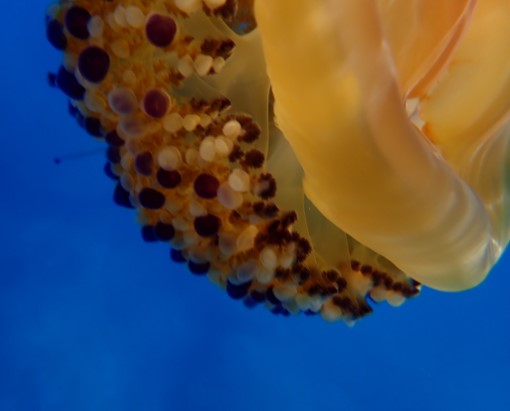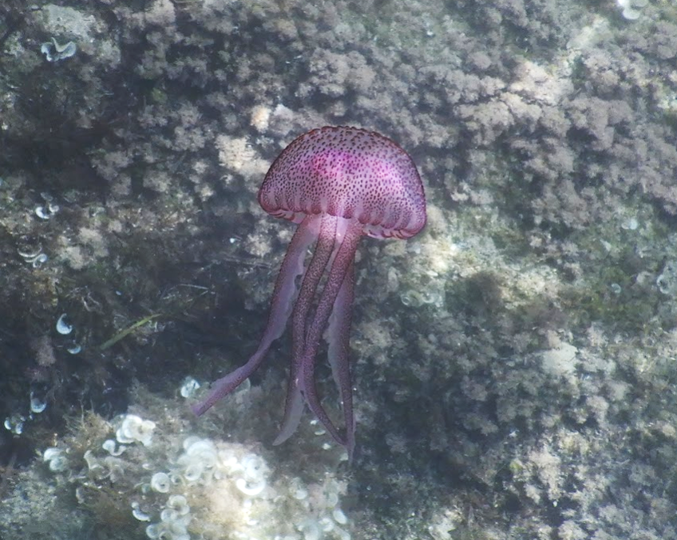Scyphozoa
Scyphozoa is referred to as the true jellyfish and consists of roughly 200 species. The main stage of their life cycles is in the free-swimming medusa phase, although most also go through a shorter polyp stage. They are generally 2-40 cm in size, with some exceptions, and most are solitary carnivores. Adults reproduce sexually, with fertilized eggs that develop into planula larvae and subsequently polyps which produce more medusa through strobilation.

Common name: Fried Egg Jellyfish
Description: Usually 35 cm in diameter but can reach up to 50 cm. The tentacles are relatively harmless to humans, and moves similarly to a plankton. Each arm is a different length and at the end they have little disks.
Distribution: Mediterranean Sea.
Ieranto: Sometimes.
Fun fact: The name “Cotylorhiza” is derived from Greek words that mean “cup” and “root”. Some fishes can be seen between the tentacles.

Common name: Luminous Jellyfish
Description: 8 tentacles, and can appear almost flat. The top can be up to 12 cm in diameter. It can appear transparent to milk and sometimes it can be a pink/magenta to brown. Generally found in late summer and winter and in large groups. When touched it emits greenish light beams.
Distribution: Mediterranean Sea, Adriatic Sea, Atlantic and Pacific Ocean.
Ieranto: Can be seen in big groups and the currents concentrate them inside the caves. Summer 2019: abnormal abundance.
Fun fact: The word “pelagia” means “of the sea”, “nocti” means night and “luca” means light. It’s also very toxic.

Rhizostoma pulmo (Macri, 1778)
Common name: Barrel jellyfish
Description: The top bell shape has a diameter of about 60 cm, but can reach 90. It appears to be blue, yellow, or milky pink. It swims mostly in the pelagic zone, but can be seen in the littoral zone.
Distribution: Northeast Atlantic and Mediterranean.
Ieranto: Rare.
Fun fact: This jellyfish lacks tentacles, but rather has about 80 to 90 lobes around the whole edge.








